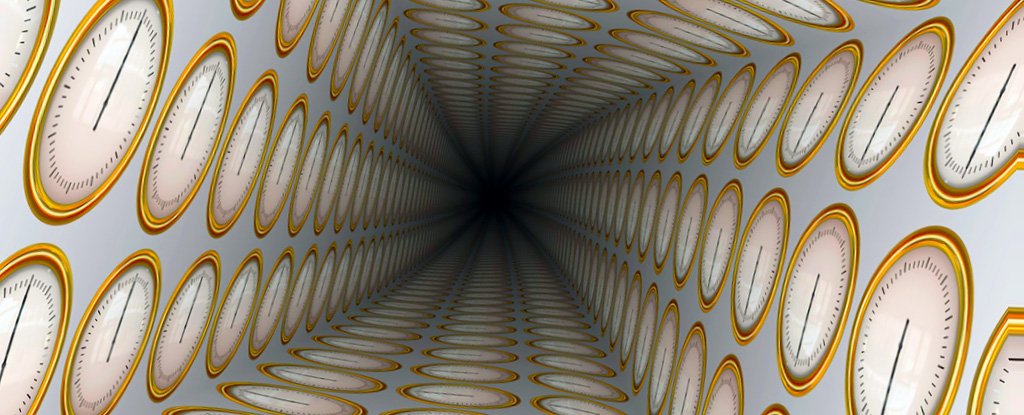Products You May Like
It’s easy to take time’s arrow for granted – but the gears of physics actually work just as smoothly in reverse. Maybe that time machine is possible after all?
An experiment from 2019 shows just how much wiggle room we can expect when it comes to distinguishing the past from the future, at least on a quantum scale. It might not allow us to relive the 1960s, but it could help us better understand why not.
Researchers from Russia and the US teamed up to find a way to break, or at least bend, one of physics’ most fundamental laws of energy.
The second law of thermodynamics is less a hard rule and more of a guiding principle for the Universe. It says hot things get colder over time as energy transforms and spreads out from areas where it’s most intense.
It’s a principle that explains why your coffee won’t stay hot in a cold room, why it’s easier to scramble an egg than unscramble it, and why nobody will ever let you patent a perpetual motion machine.
It’s also the closest we can get to a rule that tells us why we can remember what we had for dinner last night, but have no memory of next Christmas.
“That law is closely related to the notion of the arrow of time that posits the one-way direction of time from the past to the future,” said quantum physicist Gordey Lesovik from the Moscow Institute of Physics and Technology.
Virtually every other rule in physics can be flipped and still make sense. For example, you could zoom in on a game of pool, and a single collision between any two balls won’t look weird if you happened to see it in reverse.
On the other hand, if you watched balls roll out of pockets and reform the starting pyramid, it would be a sobering experience. That’s the second law at work for you.
On the macro scale of omelettes and games of pool, we shouldn’t expect a lot of give in the laws of thermodynamics. But as we focus in on the tiny gears of reality – in this case, solitary electrons – loopholes appear.
Electrons aren’t like tiny billiard balls, they’re more akin to information that occupies a space. Their details are defined by something called the Schrödinger equation, which represents the possibilities of an electron’s characteristics as a wave of chance.
If this is a bit confusing, let’s go back to imagining a game of pool, but this time the lights are off. You start with the information – a cue ball – in your hand, and then send it rolling across the table.
The Schrödinger equation tells you that ball is somewhere on the pool table moving around at a certain speed. In quantum terms, the ball is everywhere at a bunch of speeds … some just more likely than others.
You can stick your hand out and grab it to pinpoint its location, but now you’re not sure of how fast it was going. You could also gently brush your finger against it and confidently know its velocity, but where it went… who knows?
There’s one other trick you could use, though. A split second after you send that ball rolling, you can be fairly sure it’s still near your hand moving at a high rate.
In one sense, the Schrödinger equation predicts the same thing for quantum particles. Over time, the possibilities of a particle’s positions and velocities expands.
“However, Schrödinger’s equation is reversible,” said materials scientist Valerii Vinokur from the Argonne National Laboratory in the US.
“Mathematically, it means that under a certain transformation called complex conjugation, the equation will describe a ‘smeared’ electron localising back into a small region of space over the same time period.”
It’s as if your cue ball was no longer spreading out in a wave of infinite possible positions across the dark table, but rewinding back into your hand.
In theory, there’s nothing stopping it from occurring spontaneously. You’d need to stare at 10 billion electron-sized pool tables every second and the lifetime of our Universe to see it happen once, though.
Rather than patiently wait around and watch funding trickle away, the team used the undetermined states of particles in a quantum computer as their pool ball, and some clever manipulation of the computer as their ‘time machine’.
Each of these states, or qubits, was arranged into a simple state which corresponded to a hand holding the ball. Once the quantum computer was set into action, these states rolled out into a range of possibilities.
By tweaking certain conditions in the computer’s setup, those possibilities were confined in a way that effectively rewound the Schrödinger equation deliberately.
To test this, the team launched the set-up again, as if kicking a pool table and watching the scattered balls rearrange into the initial pyramid shape. In about 85 percent of trials based on just two qubits, this is exactly what happened.
On a practical level, the algorithms they used to manipulate the Schrödinger equation into rewinding in this way could help improve the accuracy of quantum computers.
It’s not the first time this team has given the second law of thermodynamics a good shake. A couple of years ago they entangled some particles and managed to heat and cool them in such a way they effectively behaved like a perpetual motion machine.
Finding ways to push the limits of such physical laws on the quantum scale just might help us better understand why the Universe ‘flows’ like it does.
This research was published in Scientific Reports.
A version of this article was first published in March 2019.
